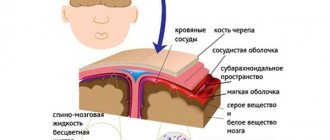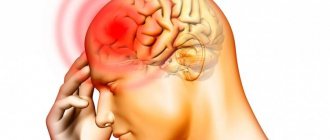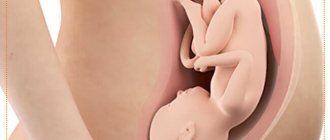Meningitis is an inflammatory process in the lining of the brain, triggered by infection in the body. Due to the fact that this disease can occur in patients of absolutely all age categories, meningitis can also affect newly born children.
It is extremely important for the child’s parents to understand the prerequisites of the disease, to be able to identify its symptoms, in order to know how to behave correctly when the disease manifests itself. It is worth learning more about the causes and consequences of meningitis in newborns. Reviews about the course of the disease are completely different. But, if it is treated in a timely manner, the risk of complications and consequences can be reduced.
Danger of meningitis
Meningitis in infants from the moment of birth until one year of age is very dangerous because in 30% of cases the disease is fatal. Complications of the pathology can also lead to disability: hearing impairment, vision impairment, and mental retardation. After long-term therapy, the child also faces a serious risk of developing an abscess in the brain. Complications can develop at any time, so the baby must be under constant medical supervision for 2 years.
The threat of this disease also lies in the fact that children do not always show pronounced signs of pathology, for example, high fever. The reason for this is the lack of developed thermoregulation in infants. Therefore, for any symptoms similar to meningitis, you should immediately call an ambulance and not indulge in self-medication.
Treatment of neonatal meningitis with medication
Childhood meningitis is a very dangerous phenomenon. Therefore, its treatment must begin strictly with the collection of tests to determine whether it is indeed bacterial meningitis. To neutralize pathogenic bacteria developing in the cerebrospinal fluid of a newborn's body, injections of antibacterial drugs are prescribed. For each child, the medicine is determined individually depending on age and possible intolerance to its components.
If a newborn periodically loses consciousness, he must be hospitalized, since treatment of the disease at home may be ineffective. In addition, meningitis caused by streptococcus carries a lot of complications, including death. With more favorable prognosis, treatment of headaches after meningitis is required.
Risk factors
In infants, this disease develops as an independent disease. The cause of meningitis in newborns is the penetration of infection into the body. The most common pathogens in this case are staphylococcus, streptococcus and intestinal infections. A high risk of the disease exists in children with central nervous system damage that occurred before or at the time of birth. And if the baby has a weakened immune system or has an intrauterine pathology, then the risk of meningitis also increases significantly. Babies born prematurely are also at risk.
Statistics show that meningitis occurs more often in boys than in girls.
Meningitis in newborns: causes, danger, symptoms and methods of prevention
Meningitis in newborns occurs as a result of pathogenic microflora entering the membranes of the brain.
This disease, in the absence of early diagnosis and comprehensive treatment, can provoke the development of a host of side effects on the newborn’s body, including death.
The risk group includes children who have autoimmune diseases, as well as pathologically weakened immunity.
General characteristics of the disease
Meningitis is an infectious and inflammatory disease that is provoked by pathogenic microorganisms of a bacterial, viral and fungal nature.
The disease is preceded by a weakened immune system, which does not allow timely fight against pathogenic microorganisms, which contributes to a rapid increase in their numbers.
Together with the blood flow, they are carried to all tissues and organs, penetrating the meninges.
The disease develops at lightning speed, in most cases causing death. The pathogenesis of meningitis is caused by birth trauma, sepsis and the presence of pathogenic microflora in the mother’s blood, which enters the newborn’s body during childbirth.
A feature of the disease during the neonatal period is:
- Impossibility of early diagnosis.
- Lightning current.
- The presence of complications in the gastrointestinal tract.
- Severe dehydration, which inhibits kidney function.
Mortality occurs in 50% of cases, so the health of the newborn should be carefully monitored, avoiding contact with sick patients. Against the background of unformed immunity, the risks of infection remain high up to 1 year of life.
Causes
The inflammatory process of the meninges develops due to the entry of pathogenic microorganisms into the child's body: streptococci, staphylococci, meningococci, E. coli. With the bloodstream, these bacteria spread throughout the body, forming inflammatory foci in the brain and spinal cord.
Very weak immunity of the newborn is the main cause of meningitis
The body of a newborn does not have its own immunity, so any bacteria, even conditionally pathogenic ones, can cause enormous harm. Most often, infection occurs during delivery or surgery, which is performed in the first weeks of life.
At-risk groups
Statistics show that the incidence of meningitis among newborns is due to factors such as:
- The male sex means girls' bodies are stronger.
- Birth injuries provoke disruption of normal blood flow, as well as the entry of pathogenic microflora into the body.
- The presence of intrauterine pathologies - diseases of the kidneys and gastrointestinal tract, which develop at the stage of fetal formation, do not allow the formation of immunity.
- Immunodeficiency conditions in which immunity is completely absent.
- The need to use glucocorticosteroids and other hormonal drugs for a long time.
- Development of sepsis, which requires long-term antibacterial treatment.
Most often, meningitis is diagnosed in premature newborns. Children born before 35 weeks in the presence of an infectious bacterial infection die in almost 90% of cases.
Symptoms of pathology
Symptoms of meningitis in newborns are similar to manifestations of a respiratory disease:
- Body temperature rises to 39-40 °. The child becomes lethargic and apathetic. He sleeps most of the day.
- Heavy and rare breathing, associated with the appearance of yellowness of the skin.
- Lack of urination for 4-5 hours, which indicates severe dehydration.
- Refusal to eat and vomiting after eating it.
- Limb spasms that intensify when the child actively cries.
These symptoms should alert parents, as they are harbingers of a dangerous condition.
If they are ignored, the focus of the brain lesion increases, which provokes the development of symptoms specific to meningitis:
- Stiffness of the muscles of the back of the head - when a child is laid on his tummy, he tries to throw his head back and roll over on his side.
- Accumulation of cerebrospinal fluid - the fontanelle begins to bulge and pulsate pathologically, and the skin in its area becomes hot.
- Inability to stabilize body temperature - no antipyretic drugs can normalize temperature.
- Soreness of the head and neck muscles - any touching or stroking of the skin causes acute pain, which is accompanied by crying and irritability.
- Tearfulness when rocked - the child begins to cry hysterically when rocked, which is explained by an increase in intracranial pressure and increased headaches.
- Whole body spasms that cause paralysis of individual parts of the body indicate damage to the nerve fibers and require immediate hospitalization.
- Comatose state - the child does not respond to any mechanical stimuli. His breathing and pulse are irregular. Requires immediate resuscitation measures, the absence of which causes death.
Treatment
Drug therapy involves the use of antibiotics that can neutralize the activity of the meningitis pathogen. This:
- Ceftriaxone;
- Cefazolin;
- Amoxicillin;
- Cefotaxime;
- Cefix.
The choice of drug depends on which pathogen causes the inflammatory process. The child’s body is supported with vitamins, hepatoprotectors, and agents to reduce irritation of the gastrointestinal tract.
When treating meningitis, it is important to select the maximum permissible dosages of medications.
Detoxification involves the administration of lytic solutions that replenish the volume of freely circulating blood, as well as the prescription of diuretics that help remove fluid from the body. In cases where the kidneys are damaged, hemodialysis may be prescribed. This procedure facilitates the work of the paired organ, enhancing its cleansing functions. This helps eliminate waste and toxins, normalizing the body's metabolic processes.
If there is damage to the central and peripheral nervous system, antipsychotics and nootropics are prescribed. They strengthen and restore connections between neurons, which helps restore sensitivity. Seizures can be controlled with anticonvulsants and muscle relaxants.
An advanced form of meningitis requires a surgical operation, as a result of which all foci of the inflammatory process are sanitized. After the procedure, the child’s condition rapidly improves, and the risks of developing negative consequences are reduced.
The duration of treatment directly depends on the degree of damage to the meninges, as well as the speed of diagnostic measures.
It is strictly forbidden to treat meningitis at home. The wrong medicine can be ineffective and life-threatening for the newborn. Only a doctor is able to correctly diagnose and select the optimal treatment plan.
Symptoms
Symptoms of meningitis in newborns are most often non-specific. In children, slowness is noticeable, from time to time giving way to anxiety, appetite decreases, they reject the breast and spit up. The following symptoms of meningitis in infants exist:
- pale skin;
- acrocyanosis (blue-violet tone of the tip of the nose, earlobes);
- bloating;
- signs of increased intracranial pressure (tense or bulging fontanel, increased head volume, vomiting).
In addition to those mentioned, doctors also note such signs of meningitis in newborns as shuddering, floating movement of the eyeballs, hyperesthesia, and the occurrence of convulsions.
Meningitis in newborns: causes, symptoms, consequences
Meningitis in newborns is not the most common disease. But you should not underestimate the risk of contracting meningitis - the consequences of the infection can be very serious. How to recognize meningitis in a child?
The very thought that a baby could get sick with such a serious illness causes horror in parents. And it is not surprising - complications after suffering inflammation of the membranes of the brain (brain and spinal cord) can be not only dangerous, but also incurable.
Often, parents avoid even talking about serious illnesses, apparently guided by the proverb “Don’t make trouble while it’s quiet.” But silence is not the best behavior tactic when it comes to health.
Meningitis, unfortunately, still affects even infants. Therefore, it is better not to hide from terrible symptoms, but to learn to distinguish between them in order to be able to help your child in time.
Timely diagnosis of meningitis can, without exaggeration, save a person’s life!
What is the meninges?
Before moving on to the description of the disease itself, it is worth explaining what the meninges are.
The human brain and spinal cord are surrounded by three membranes: hard (located closest to the bones of the skull), arachnoid and soft (it is adjacent directly to the brain). The space between the soft and arachnoid membranes (also called subarachnoid or subarachnoid) is filled with cerebrospinal fluid (CSF).
The total volume of this liquid is small (from 140 to 270 ml in an adult), but it plays an extremely important role, acting as a kind of “airbag”. Liquor protects the brain from mechanical influences, softening the consequences of “shocks”, and ensures the maintenance of constant intracranial pressure.
Just like the meninges, cerebrospinal fluid supports metabolic processes between the blood and the brain. If necessary, these “magic helpers” of our body create a barrier that prevents infections from entering the brain.
Even if a person suffers from pneumonia, a urinary tract infection or another unpleasant illness, thanks to the protection of the cerebrospinal fluid and meninges, neither viruses, nor bacteria, nor any other types of pathogens will enter the brain or spinal cord.
But if this barrier is destroyed (for example, with a weakened immune system), microbes enter the meninges and attack them. As a result, a person develops meningitis, which in turn can cause various neurological complications.
Causes of meningitis in newborns
The causative agents of infection are viruses, bacteria, and sometimes parasitic fungi. Viral meningitis is usually a little easier to tolerate than bacterial meningitis, which does not make it any less dangerous. The disease is transmitted by airborne droplets.
The causative agents of bacterial meningitis are most often meningococci (Neisseria meningitidis), pneumococci (Streptococcus pneumoniae) and Haemophilus influenzae serotype B. The latter, fortunately, thanks to the spread of vaccination, are less likely to make themselves felt in our time.
The most important risk factor for developing meningitis is a weakened or immature immune system. That is why children - especially those who often visit crowded places (kindergartens, markets, shopping centers) - are more susceptible to the disease than adults.
Symptoms of meningitis in infants
The disease develops quickly. Sometimes meningitis is preceded by otitis media or ARVI. The child develops a high fever, becomes restless and irritable, or, conversely, unusually lethargic. He reacts to touch by crying, as if his skin is irritated by something.
The fontanel on the head thickens, swells and pulsates. The child may develop an aversion to food to the point of vomiting, and the occipital and posterior femoral muscles become tense. I may experience convulsions.
An alarming symptom is the appearance on the child’s skin (usually on the legs and torso) of petechiae - purple pinpoint hemorrhages of various shapes and sizes that do not disappear with pressure.
If a child exhibits symptoms indicating meningitis, you should immediately seek medical help: call an ambulance or go to the hospital yourself!
Diagnosis of meningitis
Since meningitis may have atypical symptoms in infants, not only an initial examination by a doctor is necessary, but also laboratory tests. In addition to a blood test, when diagnosing meningitis, a cerebrospinal fluid examination is required.
To do this, a lumbar puncture is performed: under local anesthesia, the doctor pierces the skin of the child’s back with a special needle (thus getting into the subarachnoid space) and takes a sample of the cerebrospinal fluid. A very small amount of cerebrospinal fluid is sufficient to make a diagnosis. At the same time, its appearance can tell a specialist a lot.
If the liquid is cloudy (looks like oil), bacteria is the source of the infection; clear liquid indicates the viral nature of the disease.
The risk of complications after lumbar puncture is low, and the diagnostic value of this test is very high.
Treatment of meningitis
Treatment of meningitis is carried out only in a hospital!
The necessary medications are administered intravenously to the child: antibiotics or antiviral drugs. Antipyretics and drugs that reduce cerebral edema are also prescribed. The time of treatment and the child’s stay in the hospital depends on the patient’s condition and the causes of the disease.
The prognosis for treatment is different: the disease can pass without a trace (not counting, of course, the serious emotional stress that the parents of a sick child experience).
However, meningitis is fraught with serious complications: loss of hearing, vision, scarring on the skin, damage to internal organs, damage to the nervous system, and mental retardation.
A child who has had meningitis may subsequently experience cognitive and behavioral disorders of varying severity.
Fortunately, these consequences, like the disease itself, can be prevented.
Meningitis in newborns - video
Source: //badiga.ru/deti/meningit-u-novorozhdennyx-detej-prichiny-simptomy-posledstviya/
Signs of later stages
Rigidity of the neck muscles (painful sensations when trying to tilt the head towards the chest), as a rule, occurs in the later stages of the disease. At the same time, neurologists detect the following signs in an infant with meningitis:
- Babinski reflex. When stroke irritation of the sole along the outside of the foot from the heel up to the beginning of the big toe occurs, an involuntary outward flexion of the big toe and plantar flexion of the remaining toes occurs (this reflex is physiological until the age of two years).
- Kernig's sign. If the child is lying on his back, then the doctor cannot straighten his leg, bent at the knee and hip joints, at a right angle (up to 4-6 months of life, this reflex is considered physiological).
- Lasègue reflex. If a baby's leg is straightened at the hip joint, it cannot be bent more than 70 degrees.
In infants, to diagnose meningitis, doctors rely on the general clinical picture in combination with manifestations of Flatau's syndrome - enlarged pupils with a sharp tilt of the head forward, and Lessage - the infant pressing the legs towards the tummy in a suspended state.
Meningitis in children under 12 months
Before the age of one year, there is a possible risk of developing bacterial meningitis, which develops as a complication of viral diseases, acute respiratory viral infections and influenza suffered by the child.
Weak children who are often sick may develop a serous form of the disease. Fungal inflammation caused by fungi of the genus Candida is often diagnosed.
Causes for concern are:
- symptoms of body intoxication;
- diarrhea;
- vomit;
- elevated temperature;
- child's anxiety.
Often you can suspect inflammation of the meninges due to the fact that the child reacts with a cry to a loud sound and bright light. This is how a headache with meningitis manifests itself. If you do not call an ambulance in a timely manner, the symptoms may worsen and the development of convulsive seizures similar to epileptic ones.
Treatment in this case is carried out in a hospital with the help of drugs aimed at destroying the causative agent of the disease.
Fetal prematurity is one of the factors contributing to the development of neonatal meningitis. About 80% of newborns with meningitis are premature babies. The reason for the tendency of premature babies to become infected and develop meningitis is the low resistance of the fetal body to life outside the mother’s body, its morphofunctional immaturity.
In some cases, due to mild symptoms, meningitis in premature babies is not diagnosed in a timely manner. Often there are no neurological symptoms or they appear much later, at the height of the disease. All these features of the disease in premature infants create difficulties in diagnosing meningitis and contribute to the development of severe complications.
Types of disease
The following types of meningitis most often develop in newborns:
- Viral - appears against the background of influenza, measles, chickenpox and paratitis, for this reason it is difficult to recognize.
- Fungal - occurs in babies born prematurely and in children with weakened immune systems. The baby is at risk of becoming infected directly in the maternity hospital if hygiene rules are violated.
- Bacterial is the most commonly diagnosed type. It is caused by various purulent inflammations if an infection has taken hold. With blood, it reaches the layers of the brain and forms purulent foci.
Purulent meningitis in newborns occurs when infected with such types of microorganisms as Haemophilus influenzae, meningococcus and pneumococcus. In 70% of cases, infection occurs with meningococcal infection. It occurs by airborne droplets through the nose or mouth. As a rule, such a disease develops rapidly, and after 8-12 hours the baby may die.
All types of the disease require different methods of treatment, which the doctor must determine by establishing the correct diagnosis.
Meningitis in newborns: symptoms, treatment, causes and consequences
Most meningitis are infectious forms that can be caused by various viruses or bacteria. Meningococcal infection is the most common form of all inflammatory infections of the meninges.
This form of infection is registered in 70-80% of cases in patients with this disease.
Meningitis in bacterial form is serious and can develop into purulent forms.
In most cases, streptococcal and meningococcal forms of meningitis are detected in infants and infants; these infections often lead to serious complications and are severe.
Causes of the disease
Cases of purulent meningitis in newborns account for more than half of the infections of the nervous system that appear in the first days of life. The development of meningitis in an infant can be triggered by intrauterine infection, infection during passage through the birth canal, as well as infection in the first days of life.
The cause of intrauterine infection is bacterial and infectious diseases suffered by the mother during pregnancy. In this case, the pathogen is transmitted to the child through the bloodstream.
In the case of infectious diseases of the genitourinary organs in the mother, the child may be infected directly during childbirth, when the baby passes through the birth canal.
Purulent meningitis in premature babies is much more common than in babies born at term. However, premature babies are prone to rapid infection immediately after birth, due to the body's inability to function outside the womb.
Examination methods
Extracting cerebrospinal fluid (CSF) using a special needle for examination. Liquor constantly circulates in the ventricles of the brain. Taken into account:
- general blood analysis;
- c-reactive protein level;
- blood glucose;
- electrolytes;
- blood clotting process;
- presence of bacteria.
The examination is based on the results obtained from methods associated with the isolation of microorganism cultures from cultures of cerebrospinal fluid and blood.
They can be positive in more than 80% of patients who have not been exposed to antibiotic therapy.
This type of therapy helps to obtain negative cultures due to the accumulation of pus in the brain , which can be caused by special bacteria, the enterovirus herpes.
Due to an infectious disease, which is meningitis in a newborn, there is an increase in protein in the cerebrospinal fluid and a decrease in glucose concentration. The increase in leukocytes is associated with the presence of white cells involved in maintaining human immunity of more than 90% in some cases.
To make a diagnosis of meningitis, it is necessary that the cellular composition of the cerebrospinal fluid contains leukocytes exceeding 21 cells per 1 mm3. Microscopic examination of cells obtained from a source of pathology and diagnosis of diseases leading to metabolic disorders may not give the desired result.
The concentration of glucose in the cerebrospinal fluid in a child who was born prematurely is from 55 to 105%, compared with the blood glucose level in a child born on time from 44 to 128%. The presence of protein is less than 0.3 g/l or more than 10 g/l.
Experts have developed recommendations according to which it is necessary to extract cerebrospinal fluid from newborns if the following factors are present:
- positive blood culture;
- the presence of a bacterial disease, which manifests itself as foci of purulent inflammation, which is confirmed by data from clinical and laboratory studies;
- the condition worsens markedly when antimicrobial drugs are used in therapy.
The procedure for inserting a needle into the space of the spinal cord for the purpose of diagnosing the composition of the cerebrospinal fluid at the lumbar level may be postponed until the patient's condition returns to normal, despite the delay in an accurate diagnosis, as well as the likelihood of inappropriate medication administration.
If a newborn child who is suspected of having meningitis or sepsis has inadequate cerebrospinal fluid parameters, with negative blood and CSF cultures, it is worth re-diagnosis.
To exclude various infections and check for the presence of herpes, toxoplasmosis. If the analysis is taken late for more than two hours, a significant decrease in the number of leukocytes and glucose saturation in the cerebrospinal fluid may be observed. It is best if the tests are available to a specialist within half an hour.
Meningitis with CSF values within normal limits is observed in 30% of newborns. Even if the diagnosis is confirmed by microbiological examination, it is not always the cause of changes in the composition of the cells of the cerebrospinal fluid.
Indicators may be on the border between normal and abnormal. In this case, it is necessary to examine newborn patients for the presence of infections that could be transmitted directly from the mother. This applies to herpes, HIV, rubella, syphilis.
Source: //neuro-orto.ru/bolezni/infekcii/meningit-u-novorozhdennyh-posledstviya.html
Cerebrospinal fluid examination
If a disease is suspected, a lumbar puncture is performed in newborns. The diagnosis can be proven or excluded only on the basis of a study of cerebrospinal fluid. So, with acute purulent meningitis, the cerebrospinal fluid, dull or opalescent, flows under high pressure, in a stream or in rapid drops. A huge number of neutrophils can be found in it. In addition to significant neutrophilic cytosis, purulent meningitis is characterized by an increase in protein levels and low glucose saturation.
In order to establish the type of pathogen, a bacterioscopic and bacteriological study of the liquor sediment is carried out. The analysis of this fluid is repeated every 4-5 days until the newborn is completely recovered.
Rare form
Tuberculous meningitis in newly born children is very rare. Bacterioscopic examination of the cerebrospinal fluid in this type of meningitis can give a negative result. Tuberculous meningitis is characterized by precipitation within 12-24 hours in the collected cerebrospinal fluid sample while standing. In 80% of cases, Mycobacterium tuberculosis is detected in the sediment.
Bacterioscopic examination of cerebrospinal fluid in cases of suspected meningococcal or streptococcal meningitis is considered a simple and accurate express diagnostic method.
INTRAuterine INFECTIONS: diagnosis, treatment, prevention
Meningitis in children is an extremely dangerous inflammatory disease of the central nervous system with localization of the inflammatory process in the membranes of the brain: When involved in the inflammatory process in all membranes of the brain or spinal cord, panmeningitis is diagnosed. This is due, on the one hand, to the immaturity or insufficient regulation of the mechanisms of protection of the nervous system from damaging agents and the high vulnerability of the blood-brain barrier in childhood. In addition, a high percentage of meningitis in young children is associated with: This disease is most often caused by viruses:. Meningitis is also caused by pathogenic bacteria:. Less commonly, the causative agents of this disease are fungi, protozoa, plasmodium falciparum, toxoplasma, rickettsia, spirochetes, and helminths. Most infectious agents, viral and bacterial, that can cause this disease are transmitted by airborne droplets as a result of close and direct contact with a patient with particles of infected mucus: With significant resistance of meningitis pathogens in the external environment, infection is possible by contact or fecal-oral route - through toys, towels, dishes and other household items - enteroviral, tuberculosis, leptospirosis, escherichia, helminthic meningitis.
Intrauterine infections IUI synonym: congenital infections - a group of infectious and inflammatory diseases of the fetus and young children, which are caused by various pathogens, but are characterized by similar epidemiological parameters and are often.
Stages
With meningococcal meningitis, the disease goes through a number of stages:
- First, the pressure of the cerebrospinal fluid increases;
- then a small number of neutrophils are detected in the cerebrospinal fluid;
- later changes characteristic of purulent meningitis are noted.
Therefore, in approximately every third case, the cerebrospinal fluid examined in the first hours of the disease looks normal. In the case of improper therapy, the fluid becomes purulent, the concentration of neutrophils in it increases, and the protein level increases up to 1-16 g/l. Its saturation in the cerebrospinal fluid reflects the severity of the disease. With appropriate therapy, the volume of neutrophils decreases and they are replaced by lymphocytes.
Consequences of the disease
Even with timely detection of the disease, the prognosis is often not good, and prematurity aggravates possible complications. Meningitis in infants can have consequences:
- development of brain abscess;
- developmental delay;
- dementia;
- deafness;
- blindness;
- hydrocephalus;
- epilepsy;
- damage to the nervous system;
- paralysis.
In a third of cases of the disease among premature babies, treatment does not bring results and meningitis ends in death.
The consequences of meningitis depend on the age of the patient and the characteristics of the disease. Particularly dangerous complications occur in infants and young children with purulent forms of the disease.
In infants
https://www.youtube.com/watch?v=2ak0dT8sdeg
The disease in newborns and infants is dangerous because it is accompanied by an increase in intracranial pressure. Rigidity of the neck muscles and damage to the nerve fibers responsible for the facial muscles are also noted. With the bacterial form of meningitis, a large amount of pus may accumulate in the skull, compressing the structures of the brain. As a result, damage to the myelin sheaths and loss of many vital functions are observed.
In children
The consequences of the disease in children depend on the type of meningitis suffered. If the disease occurs in a purulent form, the consequences include deterioration of hearing, vision and impairment of cognitive functions.
When adhesions form due to infectious processes, the secretion and circulation of cerebrospinal fluid is disrupted, which is dangerous for the development of hydrocephalus. Such children often succumb to fainting and convulsive attacks, even to coma.
The serous form of the disease is less dangerous than the purulent form. Lesions at the base of the brain are characterized by a decrease in visual acuity up to complete blindness and the development of strabismus. In the absence of adequate treatment, damage to brain structures occurs, manifested by periventricular leukomalacia.
A common result of meningitis is epileptic seizures. Among the consequences of the reactive form of the disease, the most dangerous are disturbances in the functioning of the heart and blood vessels, as well as the development of acute renal failure.
In adults
In most cases, people who have suffered from the disease experience headaches that occur when the weather changes or due to overwork. Less commonly, the consequences are associated with impaired concentration and cognitive functions.
Helpful information
Those who have had a purulent form of meningitis often experience loss of vision, hearing, strabismus, stuttering, hydrocephalus, decreased intelligence and the appearance of epileptic seizures.
Some patients experience mental disorders that are accompanied by emotional lability.
Depending on the etiology of the development of inflammatory processes in the meninges, the development of disorders associated with the functioning of internal organs is possible. After severe meningitis, problems in the functioning of the heart, blood vessels, and kidneys may occur. Most often, these disorders manifest themselves in the form of pericarditis, vasculitis, phlebitis and chronic renal failure.
Viral
For viral meningitis, dehydration therapy with diuretics is performed to reduce intracranial pressure. Anticonvulsants and antiallergic drugs are prescribed, which reduce the body's sensitivity to toxins and allergens. In addition, the child needs antipyretic and painkillers, as well as antiviral drugs and immunoglobulin. In most cases, babies recover within 1-2 weeks.
Bacterial
For bacterial meningitis in newborns, antibiotic therapy is used, to which various types of microorganisms are susceptible. Since the study of cerebrospinal fluid taken during puncture takes 3-4 days, empirical therapy with bactericidal substances begins immediately after blood and cerebrospinal fluid analysis. The results of the express study can be obtained within 2 hours. When determining the causative agent of infection, medications are prescribed to which the detected microorganisms are more susceptible. If the baby’s condition does not improve at all 48 hours after the start of antimicrobial therapy, a secondary puncture is performed to clarify the diagnosis.
Meningitis in newborns caused by Haemophilus influenzae bacillus can be prevented by vaccination. The ACT-HIB vaccine, used in the Russian Federation, is administered to children from 2-3 months. And from the age of one and a half years, babies are vaccinated against meningococcal infection with our meningococcal A and A+C vaccine. The imported MENINGO A+C vaccine, issued in the Russian Federation, is injected into newborns if someone in the family has a similar infection.
Meningitis in newly born children is most dangerous. Its results for infants may be unpredictable, so at the first doubt about the child’s well-being, you should consult a doctor. Only the help of a professional will help protect the life and health of the newborn.
Forms and causes of meningitis
By nature, brain inflammation in newborns can be purulent or serous. The first is caused by a bacterial infection. Serous meningitis of newborns occurs after penetration of the virus. Less commonly, a fungal type of inflammation of the meninges develops. It appears in children with weak immune systems. Doctors identify risk groups for the occurrence of the disease:
- Injuries during childbirth. Damage to the membranes of the brain or nerve trunks during expulsion of the fetus.
- Low birth weight or premature babies. Their immune and nervous systems have not yet developed. Harmful microorganisms easily penetrate the meninges.
- Acquired or congenital immunodeficiency. There is a danger of a severe course of any infection, even a mild one.
- Chronic diseases, operations. The weakened body of newborns is not able to cope with meningococcal infection.
Serous
This form of the disease is mainly caused by viruses (cytomegalovirus, herpes, Epshein-Barr and others). In children with low immunity, inflammation of the brain can be caused by influenza or enterovirus infection. Rarely, serous meningitis in children is of a bacterial or fungal nature. The disease is transmitted from person to person by air, water, household or intrauterine means.
Purulent
The causative agents of this form of the disease are pathogenic bacteria. In 70% of cases, purulent meningitis is caused by meningococcal infection. Such inflammation is characterized by the development of severe complications. Reactive ones are especially dangerous. Its incubation period can last several minutes.
Purulent meningitis in newborns is transmitted through air, water and food from the mother. The incubation period lasts from 2 to 5 days. The purulent form of the disease in newborns develops due to factors such as:
Candida
In an organism with weak immunity, the opportunistic fungus Candida quickly spreads. If it enters the membranes of the brain through the bloodstream, it causes severe inflammation - candidal meningitis. At risk are children with diabetes or babies who are prescribed steroid hormones from birth.
Prevention
Preventive measures will make it possible to avoid the development of meningitis in children:
- If the baby was born weak, he should be vaccinated against this disease. Although vaccination does not provide absolute safety from germs and infections, it significantly increases it.
- To prevent your child from getting sick with viral meningitis, you should adhere to the rules of hygiene and not use your own items to care for the child.
- If there is a relative with a viral disease in the same area of residence as the baby, he should be restricted from communicating with the baby.
- The room must be regularly ventilated.
- You cannot overcool a child, just as you cannot overheat. It is necessary to dress it according to the weather.
- After consulting a doctor, it is allowed to give the baby complex vitamin complexes and minerals.
- When breastfeeding, the mother must eat properly and comprehensively. Through her body, the child receives a variety of nutrients that can help cope with illnesses.
- If any deviations in the baby's behavior or well-being occur, you should immediately contact a doctor.
To date, there is no reliable means to protect newly born children from meningitis. Experts say that only children with strong immunity can protect themselves from the disease. For this reason, during pregnancy, mothers should take care of their own nutrition and organize a proper lifestyle.
Treatment methods
Treatment of meningitis is a very long and serious process. Attempting to administer any medications at home is strictly prohibited.
Important! The disease is treated strictly in a hospital. Folk remedies will not help get rid of the disease . All therapy should begin with establishing the root cause of meningitis.
When doctors diagnose a bacterial infection, they will most likely prescribe broad-spectrum antibiotics. As a rule, medications are administered in maximum dosages over a long course. Change medications every 12 weeks.
When the disease takes the form of a viral and fungal infection, then antiviral and antifungal drugs are administered. All injections in this case are intravenous.
If there is a fungal or viral infection, the baby may recover in 14-20 days. The bacterial type of meningitis takes the longest to treat. In general, the course depends on the severity of the disease and the general condition of the body.
Let's sum it up
Meningitis in a newborn child is especially dangerous; its outcome for babies is in most cases negative. As already mentioned, children who have had the disease remain at risk of developing a brain abscess; for this reason, the baby is required to undergo constant examinations by a pediatrician for another 2 years. The consequences of meningitis in newborns, even after long-term treatment, can be serious visual and hearing impairment. The child may be developmentally delayed, suffer from bleeding disorders, hydrocephalus, and central nervous system disorders.
The prognosis for the described pathology depends on the cause and severity of the disease, as well as on the adequacy of the treatment provided.
Your IP address is blocked.
Epidemiology of infectious and inflammatory diseases and the role of Candida fungi in newborns: tabone. A characteristic symptom of bacterial and fungal meningitis is purulent inflammation of the dura and soft meninges. The main laboratory sign of purulent meningitis is an increase in the content of polymorphonuclear leukocytes in the cerebrospinal fluid. Viral meningitis is characterized by serous inflammation of the meninges. The main laboratory sign of viral meningitis is an increase in the content of lymphocytes in the cerebrospinal fluid. The term “aseptic” is sometimes used as a synonym for viral meningitis, which reflects the absence of bacterial agents in microbiological examination of the cerebrospinal fluid. The incidence of purulent meningitis, according to various sources, is 0.5 per newborn. These include: hydrocephalus, blindness, deafness, spastic paresis and paralysis, epilepsy, delayed psychomotor development.
Children's health. Meningitis in children Meningitis is a dangerous infectious and inflammatory disease because it affects the membranes of the brain and spinal cord.











